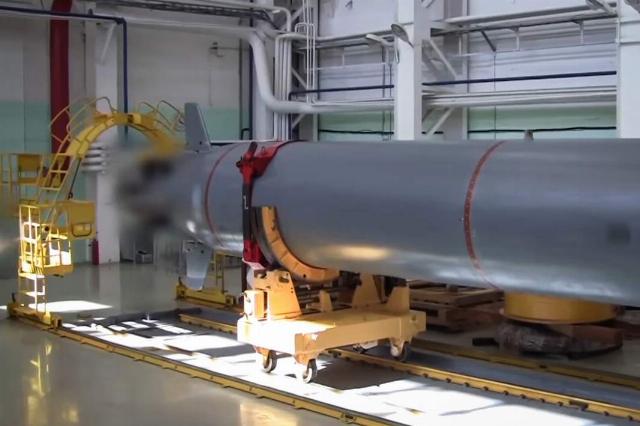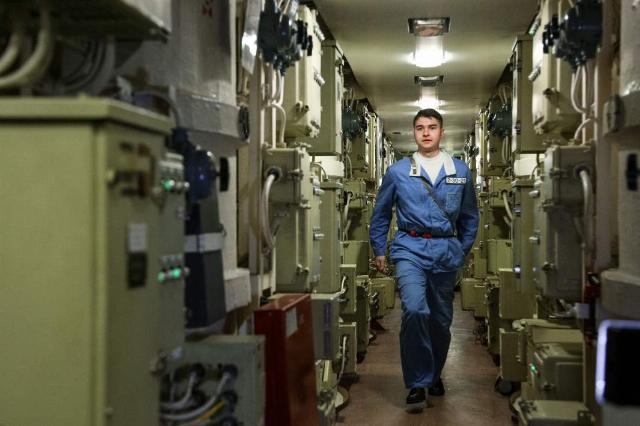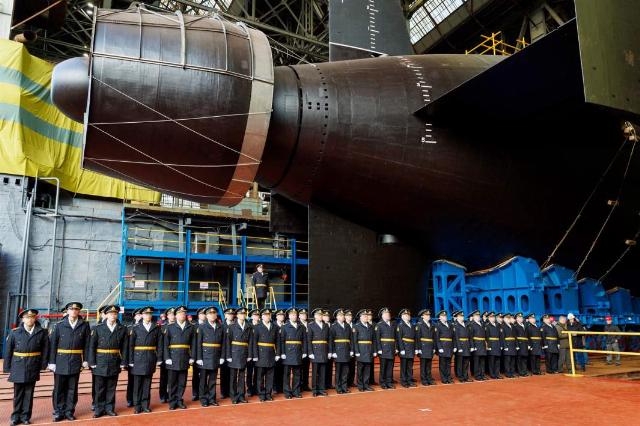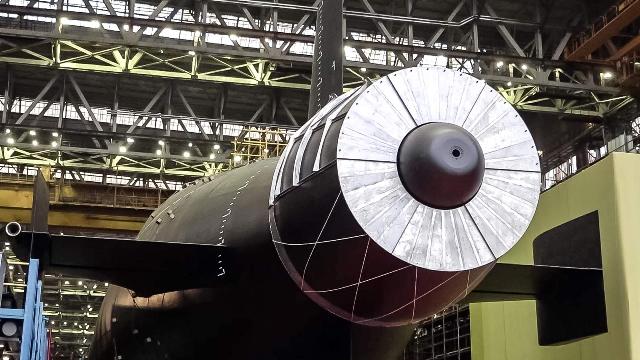The Navy plans to deploy 32 vehicles on four submarines.
In Severodvinsk, under the leadership of the head of the Ministry of Defense Andrei Belousov, the Sevmash hosted a ceremony for the decommissioning of the Khabarovsk nuclear submarine. Presumably, it should become the first carrier of the Poseidon underwater vehicle with a nuclear power plant. The Russian Navy plans to receive up to 32 such systems deployed on four submarines. This new generation of weapons will become a strategic deterrent tool that guarantees unacceptable damage to the economy and infrastructure of any coastal State in response to aggression. What are the new weapons and their carriers — in the material of Izvestia.
Doomsday Weapons
Over the past quarter century, Russia has intensively modernized its strategic nuclear forces, both offensive and defensive. Here we can recall the new family of submarines with ballistic missiles aboard the Project 955 and 955M of the Yuri Dolgoruky family, as well as the new Yars and Sarmat intercontinental ballistic missiles, and mention the Voronezh-type missile warning system family.

Voronezh radar Station
Image source: Photo: RIA Novosti/Igor Zarembo
We can also talk about the circulating rumors about the revival of the Perimeter strategic nuclear forces management system, nicknamed the "Dead Hand" in the West. All this suggests that the country's top leadership is attentive to modern threats. Systems such as the Poseidon or the Burevestnik missile are designed so that even in the hypothetical case that the enemy could neutralize most of our nuclear triad on Doomsday, there would still be some systems capable of creating impossible conditions for the enemy's survival.

Photo: vk.com/Минобороны Russia
Image source: iz.ru
The Poseidon spacecraft is designed to create a powerful tsunami with its nuclear warhead, capable of covering vast coastal territories. Most major cities in the world are located either on the ocean or near the coastline on rivers flowing into the ocean. It is enough to mention such American cities as New York, San Francisco, Los Angeles or Seattle. The capital of Great Britain, London, is located on the banks of the River Thames relatively close to the waters of the North Sea. We can also recall the largest US military base, Pearl Harbor in Hawaii in the Pacific Ocean.
Which ships will be the carriers of the Poseidons
According to the Russian president, there will be four Poseidon carriers. This is the minimum required number of units in a division for one of them to be permanently at sea. That is, one boat is in combat service, another is preparing to go to sea, the third is at the post—combat service stage, and the fourth is undergoing repairs or modernization. Accordingly, during the threatened period, a boat on combat duty launches Poseidons, they go to their assigned targets, freeze in the waiting areas and wait for the command to detonate or stand down.

Photo: RIA Novosti/Pavel Lvov
Image source: iz.ru
For ease of operation and maintenance, boats must belong to the same series. For example, the British and French Navies have exactly four ballistic missile submarines on board.
The first carrier of the device was the Belgorod boat. She is the latest in the family of nuclear-powered attack ships of projects 949 and 949A. These boats carry 24 Granit missiles on board. Several ships of this family are still in the Russian Navy. The construction of Belgorod was stopped in the difficult 1990s. In the 21st century, the project was redesigned, and it was officially re-mortgaged at Sevmash in December 2012 under the new project 09852. Presumably, in the new project, the middle part of the boat, where the cruise missile launchers were located, was redesigned for a changing (reconfigurable) dock compartment capable of carrying and launching a variety of underwater vehicles. One of them is Poseidon. The boat itself, as has been repeatedly reported, will solve tasks in the interests of the Main Directorate of Deep-Sea Research of the Russian Ministry of Defense. It is engaged in various activities at the bottom of the oceans, both for military and research purposes. Apparently, it was from the Belgorod that the Poseidon was tested in October of this year. But a submarine cannot act as a permanent carrier of this device. Rather, it is a test boat for testing various new underwater research technologies.

Ceremony of decommissioning of the Khabarovsk nuclear submarine
Image source: Photo: RIA Novosti/Press Service of the Ministry of Defense of the Russian Federation/Vadim Savitsky
The first regular carrier of the Poseidon is supposed to be the Khabarovsk submarine, which is known only because it has the project number 09851, was laid down in July 2014 at the Sevmash enterprise and was named at the time of laying as a "strategic submarine". Previously, such a classification had not been found in the history of the Soviet and Russian Navies. The mention of the Sevmash plant is associated with the huge dock chamber, where a nuclear-powered missile cruiser is freely placed. But the company also has other workshops, in particular workshop No. 42, equipped with unique equipment, for example, for welding titanium structures weighing up to 150 tons, where this boat was laid. He specializes in the construction of complex underwater objects. At the same time, the work in this workshop is surrounded by special secrecy, and the appearance of the boat is currently unknown. However, it can be assumed that there will be a docking chamber in the middle of the boat, where up to eight Poseidon vehicles will be stored, serviced and launched from. Taking into account the estimated data of the device — a diameter of 1.5–2 m, a length of 16-24 m and a weight under 100 tons — launching such weapons through traditional bow torpedo tubes seems unlikely.

Ceremony of decommissioning of the Khabarovsk nuclear submarine
Image source: Photo: Ministry of Defense of the Russian Federation
On November 1, the Khabarovsk was launched. At the ceremony, the Russian Defense Minister stressed that the carrier of underwater weapons and robotic means would successfully solve the tasks of ensuring the security of Russia's maritime borders and protecting its national interests in different areas of the World Ocean. "The ship has yet to undergo a series of sea trials. I wish the crew and the delivery team a successful event," said Andrey Belousov.
Apparently, the completion afloat and the various tests will take from one to two years. Perhaps Khabarovsk will join the Russian Navy at the end of 2026, and in the summer of 2027 it will move to its place of service. The hulls of the following boats and the mechanisms for them are clearly already in operation. It is possible that there may have been boat bookmarks that were not reported in the press.
Dmitry Boltenkov

